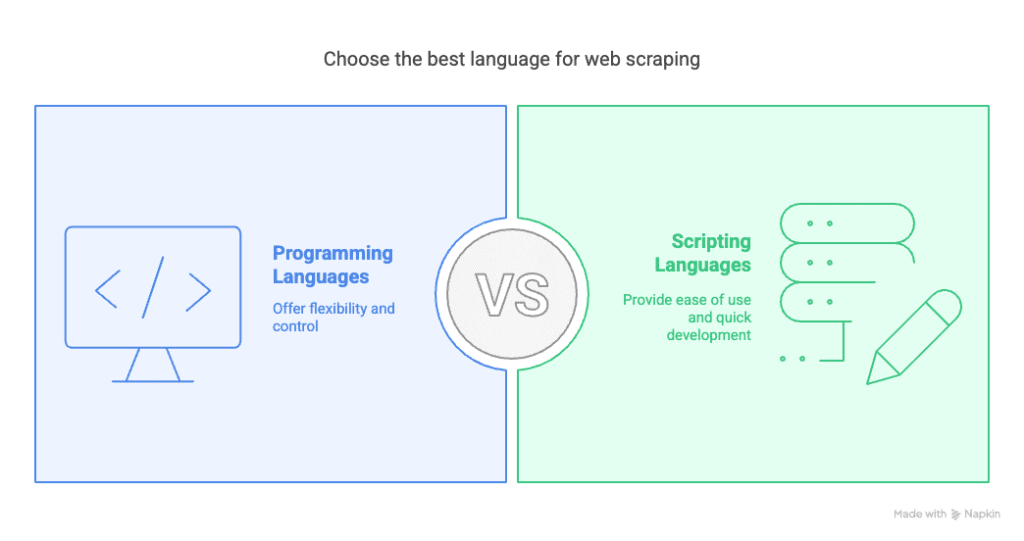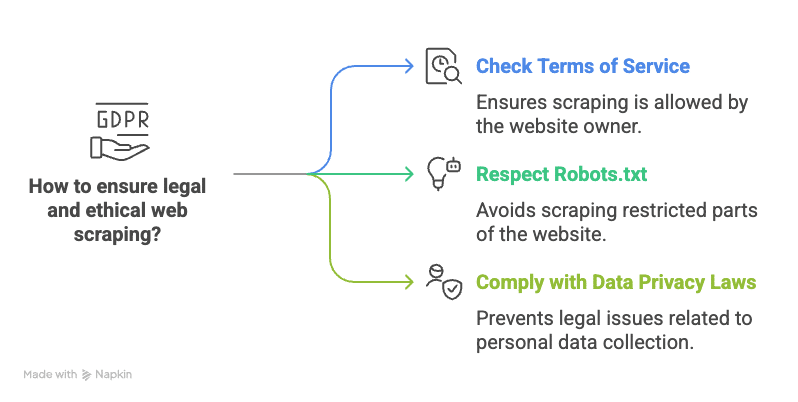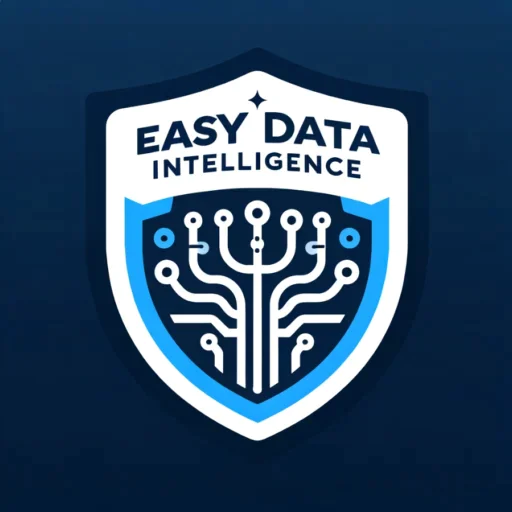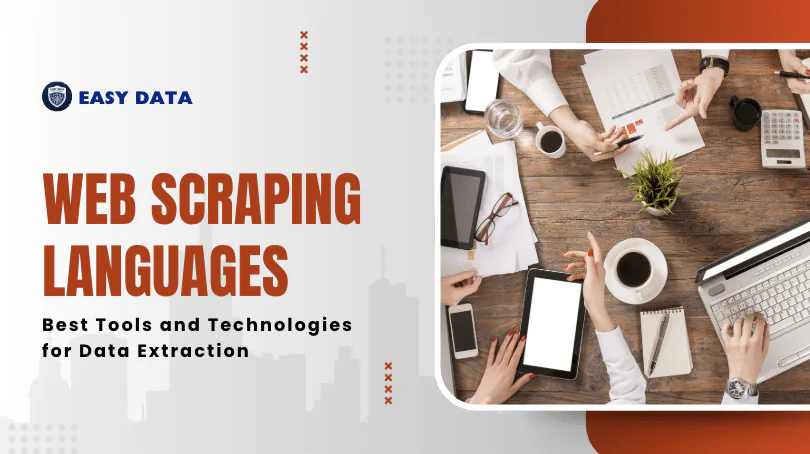Introduction: Why Understanding Web Scraping Languages is Crucial for Data Collection
Web scraping has become an essential practice for businesses looking to extract data from websites for competitive analysis, market research, and decision-making. However, to effectively collect and process data, it’s crucial to use the right web scraping languages and tools. Whether you’re a beginner or an experienced developer, understanding the key languages used in web scraping will help you choose the right technology for your projects. In this article, we’ll explore the best web scraping languages, their features, and how they can enhance your data extraction process.
- Introduction: Why Understanding Web Scraping Languages is Crucial for Data Collection
- What Are Web Scraping Languages?
- Top Web Scraping Languages and Tools
- How to Choose the Right Web Scraping Language for Your Project
- Best Practices for Web Scraping
- Conclusion: Unlock the Power of Web Scraping with the Right Language
What Are Web Scraping Languages?
Web scraping languages are programming languages or scripting languages used to write scripts or programs that automatically extract data from websites. These languages allow you to create custom scrapers that can handle complex web structures, navigate pages, and parse content. Some languages are better suited for large-scale scraping tasks, while others are more user-friendly for beginners.
The choice of language depends on the complexity of the task, your coding skills, and the specific requirements of the project. Let’s look at the top languages commonly used in web scraping.

Top Web Scraping Languages and Tools
-
Python
Python is one of the most popular languages for web scraping due to its simplicity, powerful libraries, and versatility. With Python, you can easily write scripts to extract data from websites, parse HTML, and handle complex data extraction tasks.
Some key Python libraries used in web scraping include:
- BeautifulSoup: A Python library that allows for parsing HTML and XML documents. It is easy to use and is widely used for simple scraping tasks.
- Scrapy: An open-source Python framework for building large-scale web scraping projects. It’s ideal for scraping multiple websites concurrently and handling complex data structures.
- Selenium: Although primarily used for automating web browsers, Selenium can be used in conjunction with Python for scraping dynamic web pages that require JavaScript rendering.
Advantages of Python:
- Easy to learn and use
- Rich ecosystem of libraries
- Great community support
-
JavaScript (Node.js)
JavaScript, specifically using Node.js, is another popular language for web scraping. It’s particularly useful for scraping websites that heavily rely on JavaScript to load content dynamically. Node.js allows you to run JavaScript on the server side and use libraries such as Puppeteer to scrape web pages.
Advantages of JavaScript (Node.js):
- Excellent for scraping dynamic content (JavaScript-heavy websites)
- Strong ecosystem with libraries like Puppeteer, Cheerio, and Nightmare.js
- Real-time scraping capabilities
-
Ruby
Ruby is another language that is well-suited for web scraping, especially when using the Nokogiri library. Nokogiri allows you to parse HTML and XML and is widely used by developers working in the Ruby ecosystem. Ruby’s clean syntax makes it a great choice for web scraping tasks, especially for beginners.
Advantages of Ruby:
- Easy-to-read syntax
- Powerful libraries like Nokogiri and Watir for web scraping
- Strong support for web automation
-
PHP
PHP is a server-side scripting language that is also commonly used for web scraping. While not as popular as Python or JavaScript for scraping, PHP can be used effectively to extract data from static websites. It is often used for scraping tasks in content management systems (CMS) like WordPress.
Advantages of PHP:
- Widely used in web development
- Good for scraping static web pages
- Can be integrated into existing PHP applications
-
Go (Golang)
Go, also known as Golang, is a statically typed language developed by Google. It’s increasingly being used for web scraping due to its speed, efficiency, and scalability. Go’s concurrency model allows it to scrape multiple websites concurrently without performance issues, making it ideal for large-scale scraping projects.
Advantages of Go:
- Extremely fast and efficient
- Great for concurrent scraping tasks
- Good for high-volume, large-scale scraping
-
R (Programming Language)
R is primarily used for statistical computing and data analysis, but it is also a strong contender for web scraping, especially for data scientists. R has several packages like rvest and httr that make it easy to scrape data from websites and integrate it with statistical analysis workflows.
Advantages of R:
- Ideal for data analysis and visualization
- Great for scraping and analyzing large datasets
- Rich ecosystem for statistical computing
How to Choose the Right Web Scraping Language for Your Project
Choosing the right web scraping language depends on several factors:
- Task Complexity: For basic scraping tasks, Python with BeautifulSoup may be sufficient. For more complex scraping tasks that involve dynamic content or large datasets, consider using Scrapy or Go.
- Learning Curve: If you’re new to web scraping, languages like Python or Ruby are beginner-friendly and have extensive documentation and community support.
- Website Type: If you’re scraping dynamic websites that require rendering JavaScript, languages like JavaScript (Node.js) or Python with Selenium are better suited.
- Scalability: For large-scale scraping projects, languages like Go and Python (with Scrapy) are ideal due to their efficiency and scalability.
Best Practices for Web Scraping
When using web scraping languages, there are several best practices to follow to ensure your scraping efforts are successful and ethical:
- Respect the Website’s Robots.txt File: Always check the robots.txt file of the website you’re scraping to see if the website permits scraping.
- Limit Request Frequency: Avoid overwhelming websites with too many requests in a short period. Introduce delays between requests to prevent getting blocked.
- Handle Dynamic Content Properly: Use tools like Selenium or Puppeteer when scraping websites that require JavaScript rendering.
- Comply with Legal and Ethical Guidelines: Make sure your scraping activities comply with privacy laws such as GDPR and respect the website’s terms of service.

Conclusion: Unlock the Power of Web Scraping with the Right Language
Choosing the right web scraping language is crucial for efficiently collecting and analyzing data. Whether you choose Python for its simplicity, JavaScript for its real-time capabilities, or Go for its speed, each language has its unique advantages. By selecting the right language and tools for your scraping project, you can automate the process of data collection, improve your market insights, and stay ahead of the competition.
For more information on how Easy Data can help with your web scraping needs, visit EasyData.io.vn.
External Links


Leave a Reply